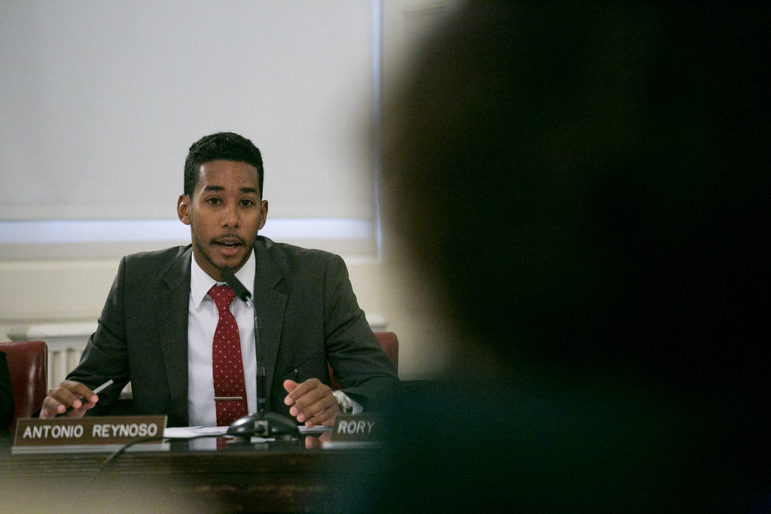
William Alatriste for the City Council
Councilman Reynoso, seen here in a file photo, launched with colleague Rafael Espinal a process called the Bushwick Community Plan.
At least 10 New York City neighborhoods have in common the fact that they either have been rezoned or could be rezoned under the de Blasio administration. Each area is unique, however, and not just because of how it looks or who lives there.
Some neighborhoods have had little choice but to take a reactive approach to the prospect of a rezoning led by the administration. In other areas, however, community stakeholders have had the time, resources or impetus to take a role in shaping that discussion. Gowanus saw the Bridging Gowanus effort, East Harlem the East Harlem Neighborhood Plan, and the Lower East Side the Chinatown Working Group.
None of those efforts encompassed every point of view–there are strong voices in East Harlem, for instance, who fault the Neighborhood Plan for welcoming a rezoning at all–and not all the initiatives have had a strong effect on the city’s course of action: the de Blasio administration, for example, has rejected the Chinatown plan as too sweeping and will look instead to rezone a far smaller area.
In Bushwick, a unique process is playing out. Launched by local councilmembers Antonio Reynoso and Rafael Espinal, the Bushwick Community Plan promises an open door, blank canvass approach to charting the neighborhood’s future in which the administration and community forces collaborate from the start.
On Thursday, Reynoso joined City Limits at the Stand-Up Desk to discuss the state of gentrification in Bushwick, the community planning process underway, the controversy over Council land-use chair David Greenfield, and the role that rezoning policies should play in this year’s elections.
Watch the video or hear the audio below.







